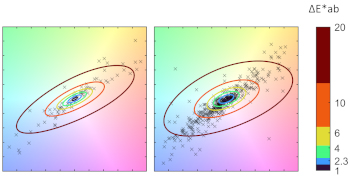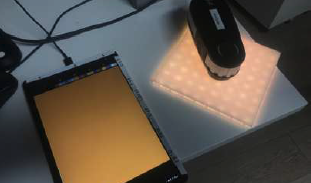
The Monk Skin Tone (MST) scale, comprising ten digitally defined colors, represents a diverse range of skin tones and is utilised by Google to promote social equity. The MST scale also has the potential to address health disparities in the medical field. However, these colors must be printed as physical charts for health practitioners and researchers to conduct visual comparisons. This study examines the colorimetric characteristics of the MST scale and establishes two per-patch acceptance criteria to determine the acceptability of a printed MST chart using a four-tier grading method. A software tool was developed to assist end users in printing accurate MST charts. The tool was tested with four printer/paper combinations, including inkjet, dye sublimation, and laser printers. Results show that a wide color gamut covering the brightest and darkest MST levels is crucial for producing an accurate MST chart, which can be achieved with a consumer-grade inkjet printer and glossy paper.

The Monk Skin Tone (MST) scale, comprising ten digitally defined colors, represents a diverse range of skin tones and is utilised by Google to promote social equity. The MST scale also has the potential to address health disparities in the medical field. However, these colors must be printed as physical charts for health practitioners and researchers to conduct visual comparisons. This study examines the colorimetric characteristics of the MST scale and establishes two per-patch acceptance criteria to determine the acceptability of a printed MST chart using a four-tier grading method. A software tool was developed to assist end users in printing accurate MST charts. The tool was tested with four printer/paper combinations, including inkjet, dye sublimation, and laser printers. Results show that a wide color gamut covering the brightest and darkest MST levels is crucial for producing an accurate MST chart, which can be achieved with a consumer-grade inkjet printer and glossy paper.

For a few years, the automotive industry has produced new cars with continuous changing display models, this by combining display sizes, forms, and technologies all together to bring new experiences to the users. In this paper we will present the color matching solution implemented for a new car display system where regular LCD display technology and LED lighting tiles are mixed together. The solution we proposed is based on accepted display model providing the transformation device RGB space to CIE XYZ independent color space and in reverse. The approach we followed choose the LCD display as reference, then transformation matrix is derived to modify the RGB LED control values. Once the color matching operation is applied, the color difference between the two display areas is greatly reduced.